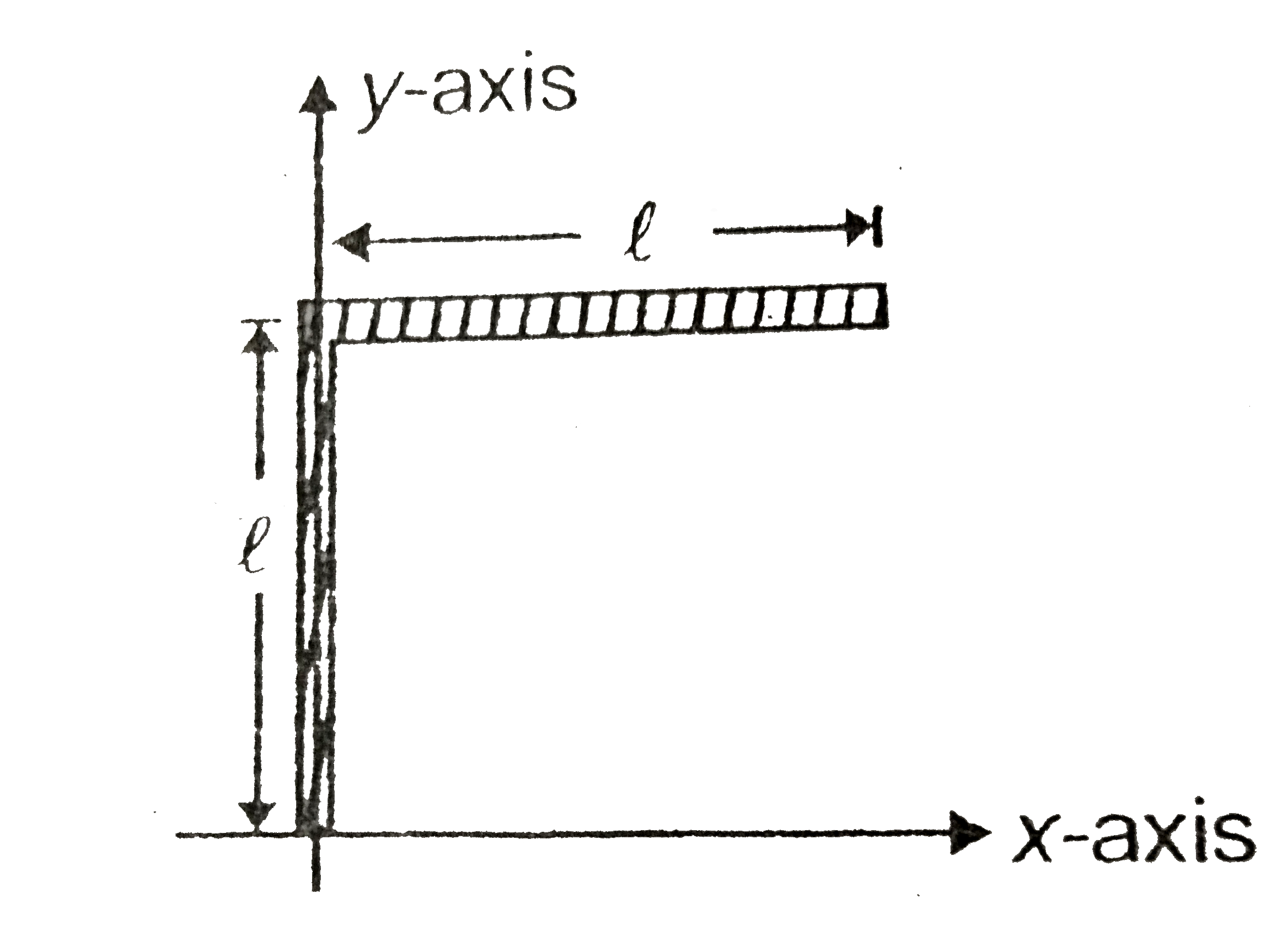A straight rod of length 'l' extends from x=l to x=2l. If linear mass density of rod is μ=(μ0l3X3), then the gravitational force exerted by rod on a particle of mass m at x=0 , is
12Gμ0ml
Gμ0ml
32Gμ0ml
2Gμ0ml
The correct Answer is:C
To solve the problem, we need to find the gravitational force exerted by a straight rod of length 'l' with a given linear mass density on a particle of mass 'm' located at x=0. We will follow these steps:
Step 1: Define the Linear Mass Density
The linear mass density of the rod is given by:
μ=μ0l3x3
where μ0 is a constant.
Step 2: Set Up the Mass Element
Consider a small segment of the rod of length dx located at position x. The mass of this small segment dm can be expressed as:
dm=μdx=μ0l3x3dx
Step 3: Calculate the Gravitational Force from the Mass Element
The gravitational force dF exerted by this small mass dm on the mass m located at x=0 is given by Newton's law of gravitation:
dF=Gmdmx2
Substituting dm into this equation gives:
dF=Gm(μ0l3x3dx)x2=Gmμ0l3xdx
Step 4: Integrate to Find the Total Force
To find the total gravitational force Fn exerted by the entire rod on the mass m, we need to integrate dF from x=l to x=2l:
Fn=∫2lldF=∫2llGmμ0l3xdx
Step 5: Perform the Integration
Calculating the integral:
Fn=Gmμ0l3∫2llxdx
The integral of x is:
∫xdx=x22
Thus,
Fn=Gmμ0l3(x22)2ll=Gmμ0l3((2l)22−l22)
Calculating the limits:
=Gmμ0l3(4l22−l22)=Gmμ0l3(4l2−l22)=Gmμ0l3(3l22)
Step 6: Simplify the Result
Finally, we simplify the expression:
Fn=3Gmμ02l
Final Answer
The gravitational force exerted by the rod on the particle of mass m at x=0 is:
Fn=3Gmμ02l
The linear mass density of the rod is given by:
μ=μ0l3x3
where μ0 is a constant.
Consider a small segment of the rod of length dx located at position x. The mass of this small segment dm can be expressed as:
dm=μdx=μ0l3x3dx
The gravitational force dF exerted by this small mass dm on the mass m located at x=0 is given by Newton's law of gravitation:
dF=Gmdmx2
Substituting dm into this equation gives:
dF=Gm(μ0l3x3dx)x2=Gmμ0l3xdx
To find the total gravitational force Fn exerted by the entire rod on the mass m, we need to integrate dF from x=l to x=2l:
Fn=∫2lldF=∫2llGmμ0l3xdx
Calculating the integral:
Fn=Gmμ0l3∫2llxdx
The integral of x is:
∫xdx=x22
Thus,
Fn=Gmμ0l3(x22)2ll=Gmμ0l3((2l)22−l22)
Calculating the limits:
=Gmμ0l3(4l22−l22)=Gmμ0l3(4l2−l22)=Gmμ0l3(3l22)
Finally, we simplify the expression:
Fn=3Gmμ02l
The gravitational force exerted by the rod on the particle of mass m at x=0 is:
Fn=3Gmμ02l
Similar Questions
A straight of length L extends from x=a to x=L+a. the gravitational force it exerts on a point mass 'm' at x=0, if the mass per unit length of the rod is A+Bx2, is given by :
View SolutionA non–uniform thin rod of length L is placed along x-axis as such its one of ends at the origin. The linear mass density of rod is λ=λ0x. The distance of centre of mass of rod from the origin is :
View SolutionIf linear density of a rod of length 3m varies as λ=2+x, them the position of the centre of gravity of the rod is
View SolutionA straight rod of length L has one of its end at the origin and the other at X=L. If the mass per unit length of the rod is given by Ax where A is constant, where is its centre of mass?
View SolutionA straight rod of length L has one of its end at the origin and the other at X=L. If the mass per unit length of the rod is given by Ax where A is constant, where is its centre of mass?
View SolutionA straight rod of length L has one of its end at the origin and the other at X=L. If the mass per unit length of the rod is given by Ax where A is constant, where is its centre of mass?
View SolutionA thin of length L is bent to form a semicircle. The mass of rod is M. What will be the gravitational potential at the centre of the circle ?
View SolutionA rod of length L is placed along the x-axis between x=0 and x=L. The linear mass density (mass/length) ρ of the rod varies with the distance x from the origin as ρ=a+bx. Here, a and b are constants. Find the position of centre of mass of this rod.
View SolutionA rod of length 2l is bent as shown in figure. Coordinates of centre of mass are

View SolutionThe density of a thin rod of length l varies with the distance x from one end as ρ=ρ0x2l2. Find the position of centre of mass of rod.
View Solution
